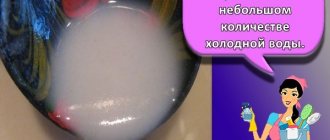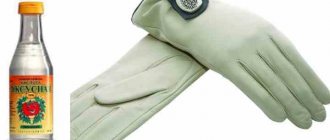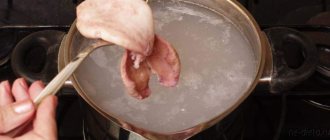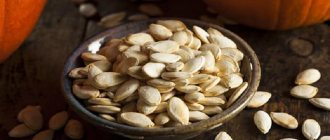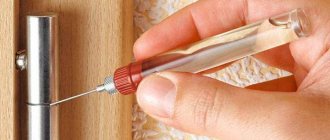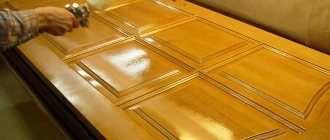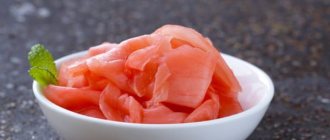Causes of squeaking
There are several reasons for the appearance of an unpleasant creaking sound when opening or closing a door.
Incorrect fastening of hinges during installation
Among the common causes of squeaks are incorrect installation of hinges. In this case, extraneous sounds appear during the first days of operation of the installed door. To fix this problem, you will have to reinstall the hinge parts. If they are not screwed to the door frame, but are welded, you will have to turn to specialists with a welding machine for help.
Hinges and facing touch each other
Sometimes squeaking sounds appear due to the contact of the door trim with the installed hinges. Most often they come into contact due to size mismatch.
Therefore, to prevent the door from creaking when opening, you will have to independently adjust the dimensions of the cladding with the hinge parts of the door.
Lack of lubrication or use of the wrong substance
Often, after prolonged use of doors, an unpleasant squeaking sound appears. Extraneous sounds coming from the hinges may indicate a lack of lubrication. The lubricating fluid applied during installation of the door structure lasts for 4-5 years. After this, you need to replace the lubricant with a new one.
No special balls in the design
Hinged designs have special balls that prevent squeaking. Some door hinge manufacturers do not add enough balls to them, which leads to squeaks. There is only one way to get rid of this problem - to disassemble the structure and equip it with everything you need yourself.
Great wear
Door hinges, like most other parts, wear out over time. Determining that a product has begun to wear out is quite simple. To do this, just carefully examine the loop. A worn-out part begins not only to creak, but also to sag. If the hinges sag too much, the door will no longer close tightly.
See also
What wallpaper can be painted, operating instructions and tips for applying the material
Rusty hinges
All metal products face the problem of corrosion. Most often, traces of rust appear on doors that are installed in private houses on the street. Due to prolonged rains and high humidity, rust forms on their surface. Over time, it gets from the surface into the inside of the hinges, after which they begin to creak.
Manufacturing defects
Sometimes people buy door hinges with factory defects. Common consequences of using such parts include the following:
- loosening loops;
- creaking;
- contact of the platband with the door frame.
What to do if the hinges are rusty and you can’t remove the door
After long-term use of a hinge or several hinges that are used outdoors, situations often arise when it is impossible to remove the door leaf. The hinge becomes covered with rust, which interferes with the normal operation of the mechanism and disassembly of the device. In this situation, it is recommended to use rust dissolving agents.
Example of a rust remover
When purchasing a spray or aerosol (as in the picture), the product is sprayed onto the surface of the loop. If a liquid oil composition is chosen as a solvent, then a compress should be applied to the loop: the composition is applied to a rag, which is applied to the loop.
It will take 3 to 6 hours for the softening composition to fully interact with rust.
Under no circumstances should you knock down a rusty hinge with a hammer or other device. This can damage both the hinge itself and the door.
Thus, there are a lot of products for lubricating door hinges and locks. The compositions can be purchased freely. Door hinges should be lubricated regularly. This affects the service life of the mechanism.
What can you use for lubrication at home?
If the door creaks, you need to start lubricating the hinges. There are several products that are often used as a lubricant.
Vegetable oil
Sunflower oil is found in almost every home and therefore it is used most often. Before lubricating the part, the liquid is drawn into a medical syringe, after which it is carefully squeezed out. After applying the oil, the door is opened and closed several times so that the liquid is better distributed over the surface.
Pencil lead
Vegetable oil dries quickly, and therefore experts advise using other means for treating loops. Popular anti-squeaking agents include pencil lead. It is carefully placed on the hinges, after which the position of the door leaf is changed 2-3 times. When the lead crumbles, the door must be closed and opened again so that the pencil particles can spread better.
Warm vegetable paraffin or wax
Non-standard methods of eliminating squeaking include the use of vegetable wax or molten paraffin. To stop the door from creaking, a burning candle is placed above its hinge parts. At the same time, it should be in such a position that hot paraffin or wax gets into the crevices of the product.
Special means
There are several special products that are often used when lubricating iron parts.
WD-40
WD-40 is considered a universal product that comes in the form of a spray or an oily liquid. Most often, this composition is used to get rid of traces of corrosion and dried stains on the surface. However, some people use WD-40 to treat and lubricate door mechanisms.
See also
The best ways to quickly repair a shoe sole if it bursts
Machine oil
If the door squeaks, you can use regular machine oil. Experts recommend choosing liquid products without an unpleasant odor and seals. Before applying the oil, the door is raised a few millimeters. Then oil liquid is poured into the inside of the hinge part and the door leaf is lowered.
Sewing machine maintenance oil
Some people do not have machine oil on hand and have to use other means. It can be replaced with oil fluid for lubricating sewing machines. This product should be used in the same way as car maintenance oil.
Special lubricants for machine mechanisms
Means for treating machine mechanisms include litol and grease. A distinctive feature of such oily compositions is their high density. Apply the product to the surface of the mechanism using a cotton swab or finger.
How to lubricate correctly?
The final result depends no less on the technique of applying the lubricant than on the means by which it is carried out. Hinges need to be able to be lubricated correctly so that they do not creak. The composition applied to the desired area will help solve the problem efficiently and without hassle. This will help avoid subsequent contamination of the mechanism and extend its service life. It is worth clarifying certain rules regarding the lubrication process of any door hinges.
- The product must be applied using a special oil can, using a nozzle with a thin tube or a medical syringe.
- If the hinges are disassembled, you can treat them with a thin brush or a cotton swab lubricated with lubricant. A cloth is less convenient for lubrication.
- To avoid staining the doors with excess oil, you need to use a dry paper napkin.
- When a door squeak is heard in a specific area, that area needs more intensive treatment. It is easy to find by external signs of abrasion.
- The inner part of the hinges needs more generous treatment with oil, since it is the working part of the mechanism that is subject to wear.
To process universal hinges without removing the door, you need to select a suitable lubricant and a bottle with a thin spout. If the product is already packaged in this way, you can get down to business right away. Otherwise, you should carefully pour the oil composition into a convenient container. The lubricant should easily penetrate through dust and cover all working parts of the hinge mechanism with a protective film.
It is convenient to use the product in the form of a spray. Silicone and lithium lubricants are no less convenient. The latter of them is sold in all car dealerships and is great for processing anything squeaky and metallic. This method is very convenient for those who cannot lift a heavy door leaf. Lubricant is applied between the hinges, carefully filling the cracks with it.
The second method of lubricating the hinges on the door is more troublesome. Suitable for detachable hinges. You will have to remove the canvas by lifting it with a crowbar. Place it on top of two stable chairs and process according to the recommendations. In this position, it is much more convenient to inspect the hinges, especially if you have to disassemble or repair them.
Prepare unnecessary old rags in advance. Be sure to be dry and clean to wipe off excess oily grease and clean contaminated areas. They must be cleaned before applying lubricant. Otherwise, all your efforts will be in vain. Abrasive particles with a new portion of lubricant will harm the hinges even more actively. After lubrication, the door leaf must be hung in place.
Methods
There are various methods for eliminating squeaking, which you need to familiarize yourself with in advance.
Without dismantling the door
A squeaky hinge can be lubricated without removing the door leaf. The lubrication procedure consists of the following sequential steps:
- opening the door;
- raising the canvas by 1-2 centimeters;
- removing old grease and debris from fittings;
- applying oil liquid;
- lowering the door.
With the canvas removed
Sometimes lifting the canvas is not enough and you have to remove it completely. To do this, the door is opened slightly and a metal lever is placed under it. Then, with its help, the canvas is lifted and removed from the hinges. Having got rid of the door, the hinges are treated with a lubricant.
Features of working with various doors
To quickly get rid of squeaking, you need to familiarize yourself with the lubrication features of different doors.
Plastic
Lubrication of products made of plastic is carried out in the following sequence:
- the hinge cover is removed and cleaned;
- special silicone lubricant is sprayed;
- the balcony door opens 1-2 times as much as possible so that the lubricant flows inside;
- installation of overlays.
Wooden
The most popular are doors made of wood.
An interior wooden door is lubricated as follows:
- Removing the loop rod located at the top of the mechanism. To quickly remove the rod, it is better to use pliers.
- Applying lubricant. The liquid is applied to the surface of the removed rod and poured inside the loop.
- Installation of the rod. After lubrication, the part is installed in the hinge mechanism.
Glass
Manufacturers of glass doors make permanent hinges that can only be lubricated with liquid compounds. The most suitable is WD-40, which is poured into each gap using a syringe or pipette.
See also
How to check the pressure switch of a washing machine with your own hands
Metal
Before installation, the metal entrance door is carefully treated with a lubricant. However, over time it dries out and a characteristic squeak appears. Therefore, in order to get rid of extraneous sounds, the loop must be lubricated with machine oil or grease. To do this, you will have to lift the door leaf and pour lubricant into the mechanism.
Accordion door
The main feature of such a door is that there is not a single hinge on it. Instead, special guides are used, which also creak over time. They need to be cleaned 1-2 times a month to remove debris that gradually accumulates inside.
Sliding
The hinges on which the sliding door panels are hung are treated with machine oil. First, the door is opened wide, after which liquid is poured into the openings of the mechanism. To make it easier to fill in the oil, you can use a syringe. The door leaf is rocked back and forth several times to better distribute the lubricant.
Lubricating parts
There are several parts that need to be lubricated regularly.
Hinges
The door leaf is opened and closed using special hinges. If you care for them incorrectly, an unpleasant squeak appears. Machine or sunflower oil, which is poured into the gap between the hinges, will help get rid of the creaking sound.
Awnings
This is another part that needs to be lubricated periodically. Metal sheds begin to squeak if they are not treated with oil for a long time. Therefore, they must be lubricated with grease or liquid oils every six months.
Guides
The accordion door opens not with hinges, but with special metal guides. Experts advise periodically washing them and cleaning them of debris. To make the door open smoother, the surface of the guides is coated with machine oil.
Door lock
Over time, the iron lock begins to work worse, which makes the key difficult to turn. To prevent the door lock from jamming, a lubricating compound is poured into it using a pipette, enema or syringe. 2-3 drops are enough.
Butterfly loops
Many doors have butterfly hinges that need to be lubricated regularly. It is better to use motor oil as a lubricant, which will extend the life of the hinge mechanism. Engine oil should be changed every four months.
Solidol, "Litol" or "Ciatim"
Due to the thick composition, they are applied with a stick, ruler, paint brush or finger to the loops. Lift the creaking door slightly and apply one of the selected products into the gap.
Solid oil cannot be used to lubricate street doors (gates, wickets or driveways). When exposed to low temperatures, it thickens and turns into an abrasive, so it can only be used at home.
Litol is characterized as a water- and frost-resistant lubricant, but is harmful to aluminum surfaces.
Ciatim" (thick lubricant for automobile parts) has antioxidant and frost-resistant properties, is practically not washed out by water, but when left in the open air for a long time, the lubricant dries out.

